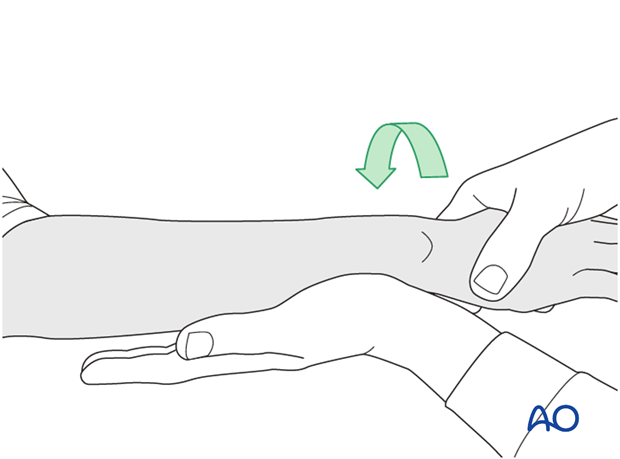Transverse radial fracture: compression plating
1. Principles
Compression
Absolute fracture stability, achieved by interfragmentary compression, results in direct bone healing.
Axial compressionUsing self-compressing plates (DCP, LC-DCP, LCP, etc.), axial compression results from eccentric screw (load screw) insertion.
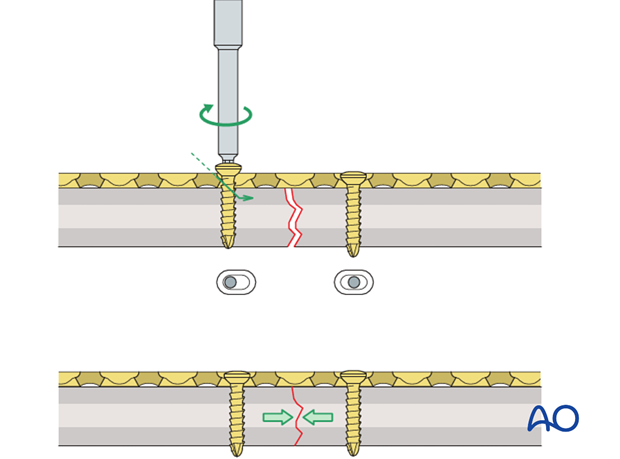
Prebending the plate
The solution to this problem is to “over-bend” the plate so that its centre stands off 1-2 mm from the anatomically reduced fracture surface.
When the neutral side of the plate is applied to the bone, slight gapping of the cortex will occur directly underneath the plate.
As the load screw is tightened, the tension generated in the plate compresses the fracture evenly across the full diameter of the bone.
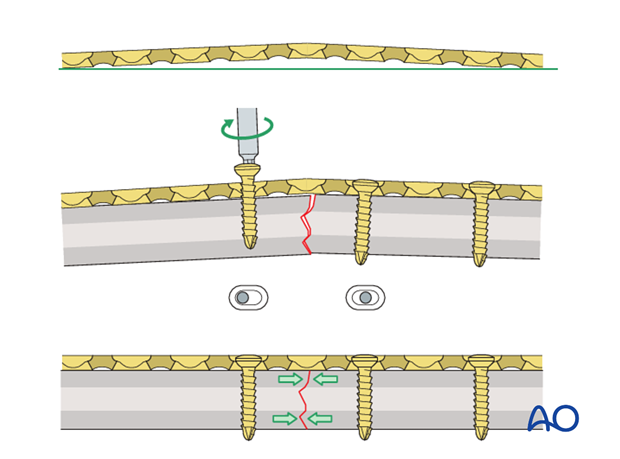
Plate position
Depending on the procedure chosen, the plate will be applied to either the anterior or posterior surface of the radius.
In the following example, we illustrate the plate applied to the posterior surface.
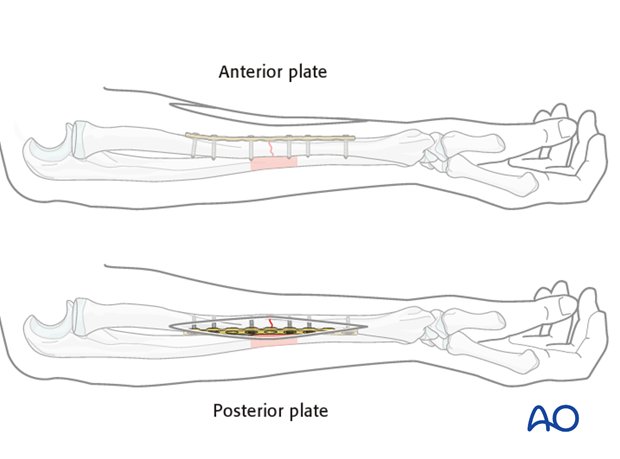
Choice of approach
For proximal radial shaft fractures, the anterior approach (Henry) is most often used to minimize the risk of damage to the posterior interosseous nerve, which crosses the proximal radius within the supinator muscle.
In mid and distal radial shaft fractures, either the anterior approach (Henry) or posterolateral approach (Thompson) can be used, depending on surgeon’s preference.
2. Reduction
Open and anatomical reduction
Reduce the fracture anatomically, using a reduction forceps on each main fragment. The use of blunt, as opposed to pointed, reduction forceps can be helpful, particularly if greater forces are required.
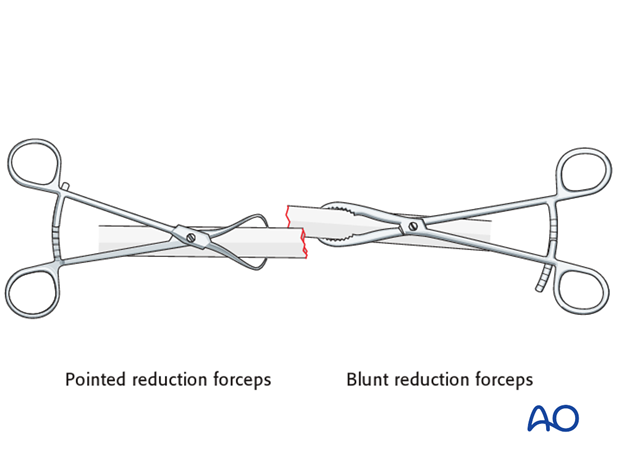
A small bone lever can be used to reduce transverse, or short oblique, fractures as illustrated.
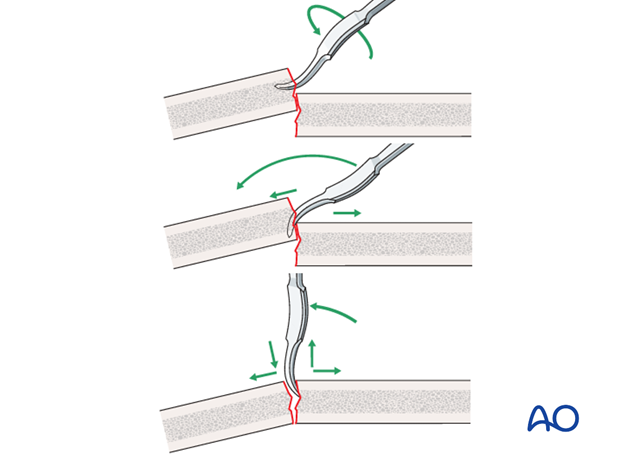
Reduction of overlapping short oblique fractures can sometimes be achieved by twisting a reduction forceps, thereby lengthening the fracture.

Maintain fracture reduction
A reduced transverse fracture can not be maintained with reduction forceps alone. However, transverse fractures are usually dentate and are intrinsically stable after anatomical reduction.

If not, fix the plate to one fragment and then reduce the other fragment onto the plate.
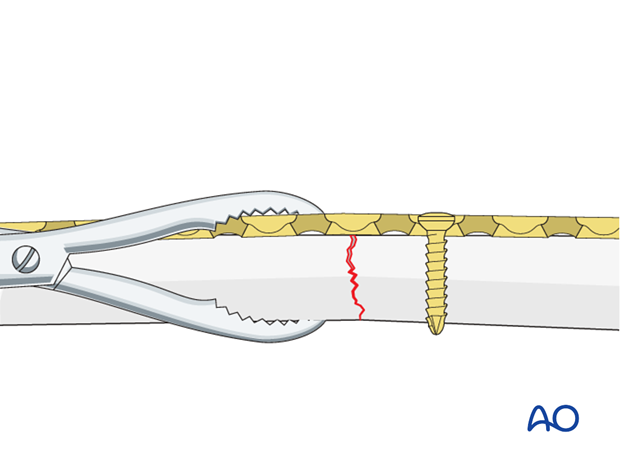
A bone spreader, placed between the end of a plate and an independent screw, can be used to distract the fracture for reduction.

In order to maintain the reduction, using the same independent screw, preliminary axial compression can then be obtained by pulling the plate end towards the screw with a small Verbrugge clamp.
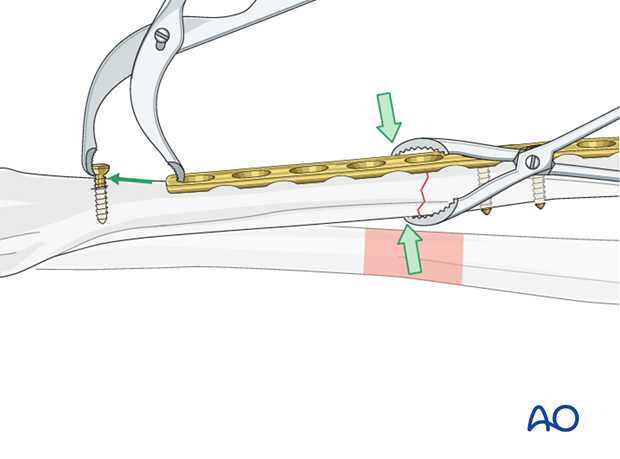
3. Plate length and number of screws
In short oblique forearm shaft fractures an empty plate hole may be necessary at the level of the fracture, but only if the fracture configuration demands.
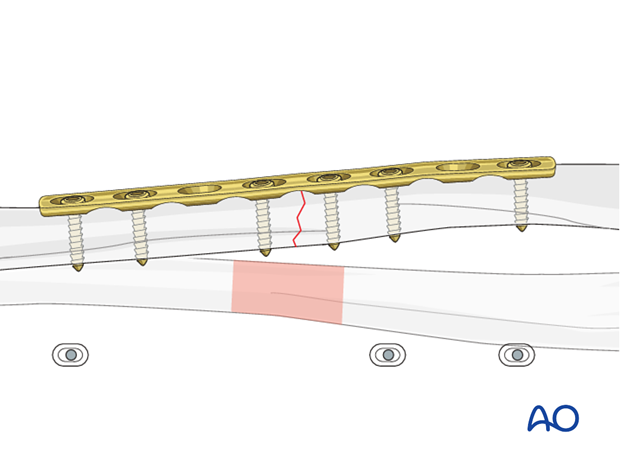
4. Fixation
Dynamic compression principle
The holes of the plate are shaped like an angled cylinder. The spherical undersurface of the screw head slides down the inclined cylinder as the screw is tightened.
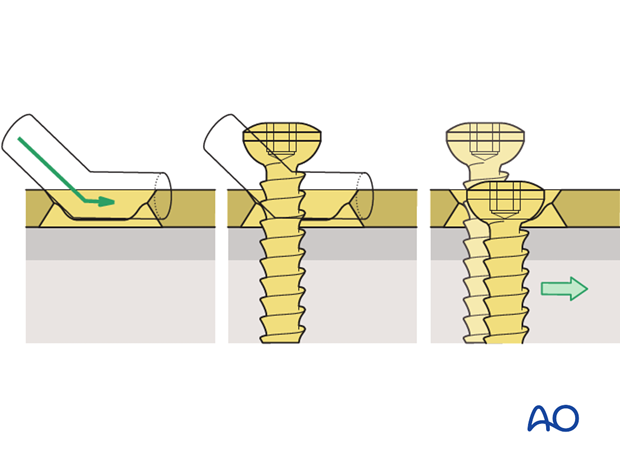
The horizontal movement of the head, as it impacts against the angled side of the hole, results in movement of the bone fragment relative to the plate, and leads to compression of the fracture.

Prebend the plate
After the plate has been contoured anatomically to the reduced bone surface, prebend it with the handheld bending pliers, or a pair of bending irons, as explained in the principles section.
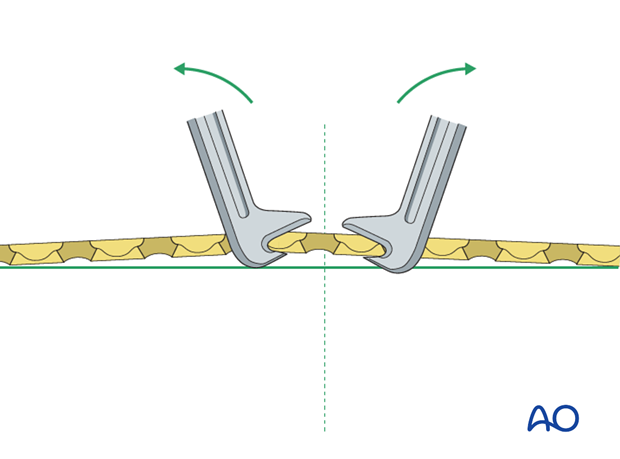
Insert 1st screw
The prebent plate is fixed to one of the main fragments with a screw in neutral mode. A reduction forceps is placed on the opposite fragment to hold it in the reduced position against the plate.
Note: Because of the design of the LC-DCP holes, the neutral drill guides for the LC-DCP have a very slightly eccentric hole and an arrow, which needs always to point towards the fracture line.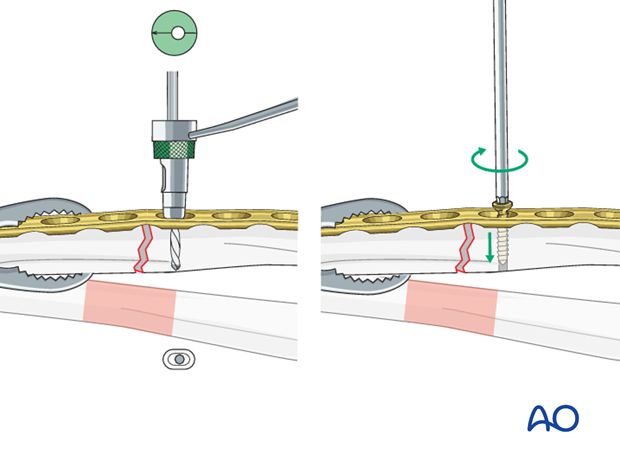
Insert 2nd screw eccentrically
A second screw is inserted eccentrically (yellow drill sleeve) into the opposite fragment.
Note: the arrow on the drill sleeve has to point towards the fracture line.
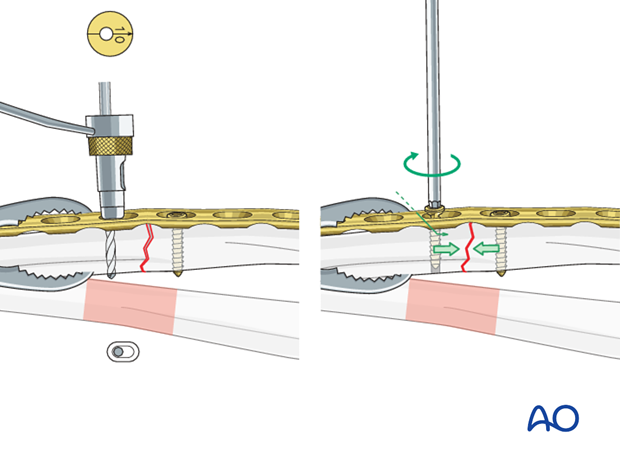
Tighten screw
By tightening the eccentrically-inserted screw, axial compression is achieved.
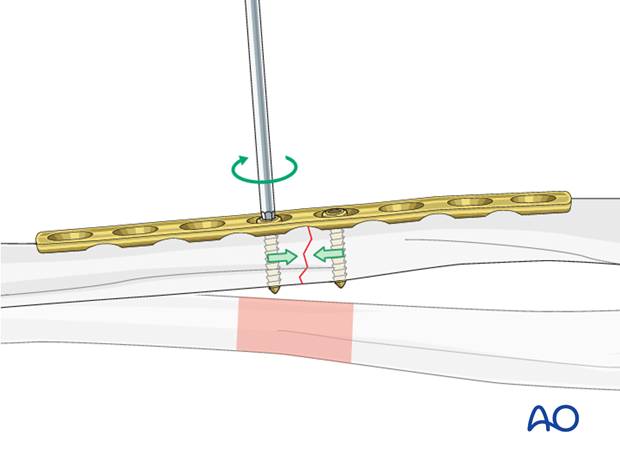
Insert additional screws
However, should it be necessary to increase the axial compression, a second screw can be inserted eccentrically into either fragment.
As the second eccentric screw is tightened, the first screw in the same fragment needs to be loosened slightly to allow the plate to slide on the bone.
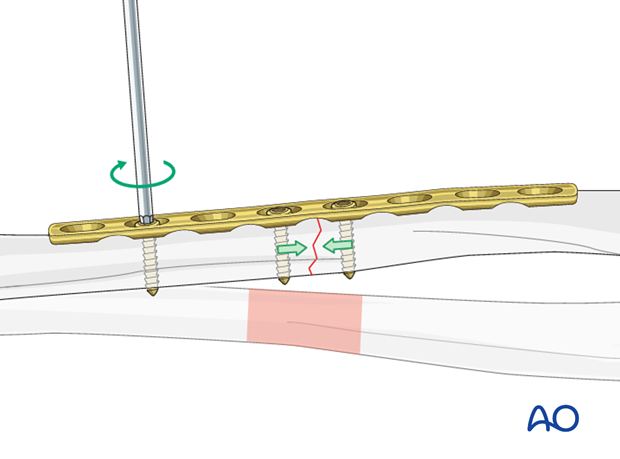
Pearl: alternative drill sleeve
For inserting screws into the limited contact dynamic compression plate (LC-DCP), the Universal Drill Guide can be used as well. When this drill guide is pressed into the plate hole, the screw position will be neutral (A). When it is held against the end of the plate hole, without exerting downward pressure, the screw position will be eccentric (B).
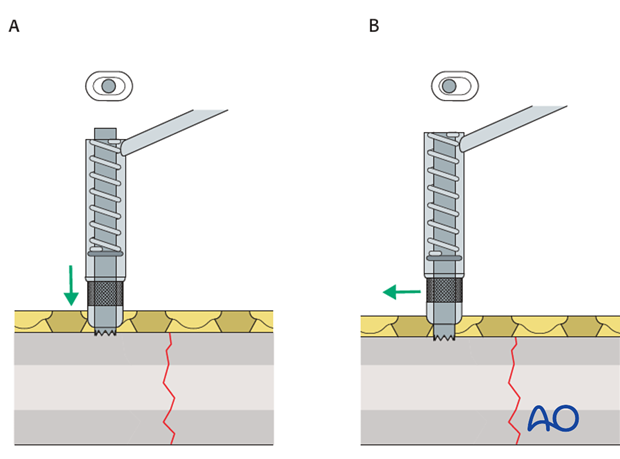
Completed osteosynthesis
All other screws are inserted in a neutral position (green drill sleeve) and do not serve further to increase compression.
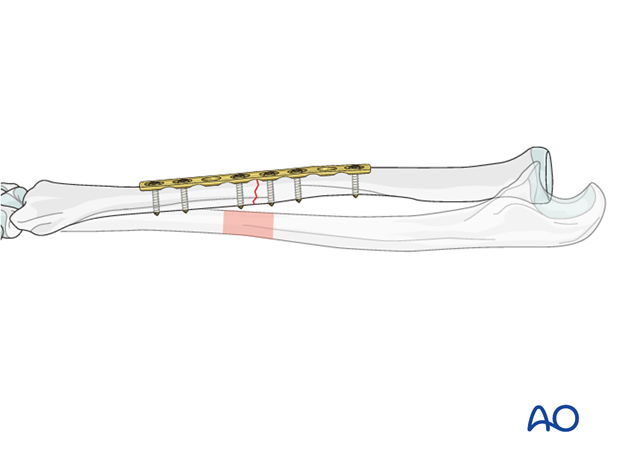
5. Check of osteosynthesis
Check the completed osteosynthesis by image intensification. Make sure that the plate is at a proper location, the screws are of appropriate length and a desired reduction was achieved.

The elbow should be stabilized at the epicondyles and the forearm rotation should be checked between the radial and ulnar styloids.

6. Assessment of Distal Radioulnar Joint (DRUJ)
Before starting the operation the uninjured side should be tested as a reference for the injured side.
After fixation, the distal radioulnar joint should be assessed for forearm rotation, as well as for stability. The forearm should be rotated completely to make certain there is no anatomical block.
Method 1
The elbow is flexed 90° on the arm table and displacement in dorsal palmar direction is tested in a neutral rotation of the forearm with the wrist in neutral position.
This is repeated with the wrist in radial deviation, which stabilizes the DRUJ, if the ulnar collateral complex (TFCC) is not disrupted.
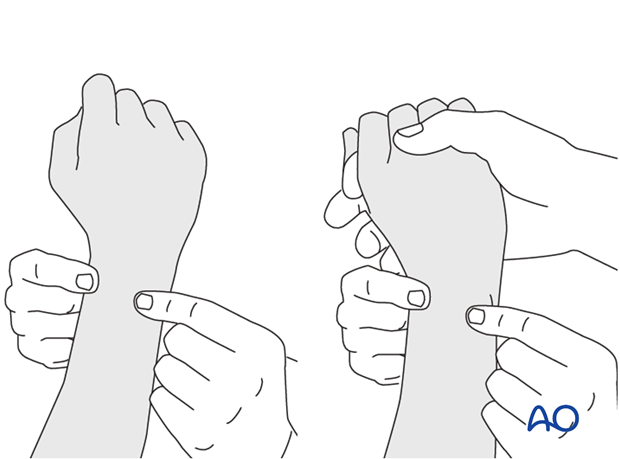
This is repeated with the wrist in full supination and full pronation.
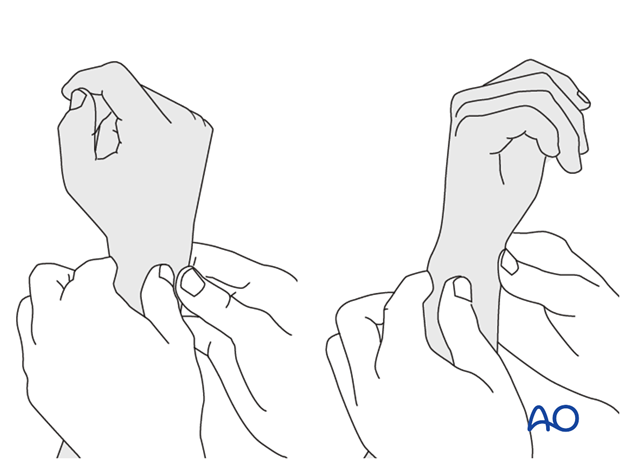
Method 2
In order to test the stability of the distal radioulnar joint, the ulna is compressed against the radius...

...while the forearm is passively put through full supination...

...and pronation.
If there is a palpable “clunk”, then instability of the distal radioulnar joint should be considered. This would be an indication for internal fixation of an ulnar styloid fracture at its base. If the fracture is at the tip of the ulnar styloid consider TFCC stabilization.
